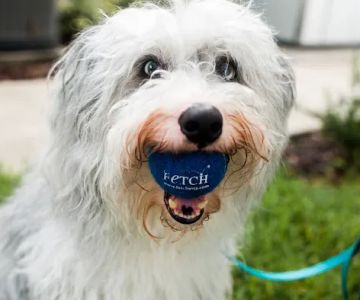- 1-Understanding-Fetch-Behavior
- 2-Basic-Training-Steps-for-Fetch
- 3-Advanced-Retrieval-Techniques
- 4-Stories-from-Pet-Owners
- 5-Professional-Support-and-Resources
1. Understanding Fetch Behavior
Teaching a dog to fetch and retrieve toys and balls taps into their natural instincts and desire to please. Fetch is a rewarding game for dogs, promoting physical exercise and mental stimulation. However, not all dogs take to it naturally, so understanding the basics of fetch behavior is essential before starting training.
Dogs have varying levels of interest and motivation, often influenced by breed, age, and personality. For example, retriever breeds usually excel in fetch due to their genetic predisposition, while others may need more encouragement.
1.1 Why Dogs Love to Fetch
Fetching mimics natural hunting and retrieving instincts, providing dogs with a purposeful activity. It also strengthens the bond between dog and owner through interactive play.
1.2 Assessing Your Dog’s Readiness
Before beginning training, observe your dog’s enthusiasm for toys and balls. If your dog shows little interest, start by introducing highly appealing toys or using treats to build excitement.
2. Basic Training Steps for Fetch
Training a dog to fetch and retrieve toys or balls requires patience and consistency. Begin indoors or in a confined space to minimize distractions. The first step is to teach your dog to chase and pick up the toy on command.
Use clear verbal cues such as “fetch” or “get it,” combined with gestures. When your dog picks up the toy, encourage them to bring it back by calling them with praise or treats.
2.1 Encouraging Retrieval
Not all dogs instinctively bring the toy back, so teaching the “bring it here” command is crucial. Start with short distances and reward your dog when they return with the item. Gradually increase distance as they improve.
2.2 Using Positive Reinforcement
Reward-based training motivates your dog effectively. Offering treats, praise, or playtime after successful retrieval helps reinforce the behavior. Avoid frustration; keep training sessions short and fun.
3. Advanced Retrieval Techniques
Once your dog masters the basics, you can introduce more complex commands and variations such as “drop it” or “leave it,” teaching your dog to release the toy on command. This step is vital to maintain control during play.
For dogs that enjoy water, teaching retrieval from water sources can add variety and challenge. Using different types of toys and varying locations also keeps training engaging.
3.1 Problem-Solving Common Challenges
Some dogs may chase the toy but refuse to return, or lose interest quickly. Using two identical toys can help; when your dog drops one, show them the other to encourage continued play. Patience and consistency remain key.
3.2 Incorporating Fetch into Daily Routine
Regular fetch sessions provide exercise and mental engagement, helping to reduce unwanted behaviors caused by boredom. Scheduling fetch as part of your dog’s daily activity helps keep them healthy and happy.
4. Stories from Pet Owners
Jessica shared how her energetic Border Collie, Max, struggled initially with fetch. By slowly introducing commands and using Max’s favorite squeaky ball, she turned fetch into Max’s favorite game. Over time, Max learned to retrieve consistently and even fetch items like slippers on command.
Another pet owner worked with a shy rescue dog through Hidden Brook Veterinary’s recommended training products and expert guidance. Their dog gradually gained confidence and joy in fetching games, strengthening the owner-pet bond.
5. Professional Support and Resources
Hidden Brook Veterinary provides a range of products, training aids, and expert advice for dog owners looking to train their pets to fetch and retrieve. Whether you need durable fetch toys or personalized training tips, their team can guide you toward success.
Professional trainers and veterinary behaviorists can also tailor fetch training plans to your dog’s specific needs, helping overcome challenges and making training enjoyable for both dog and owner.











